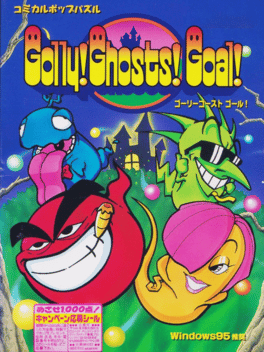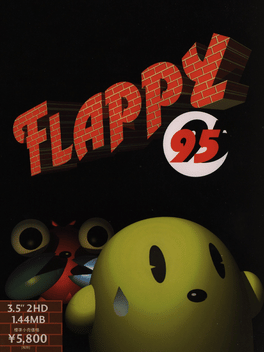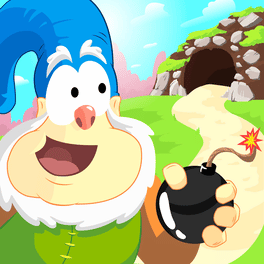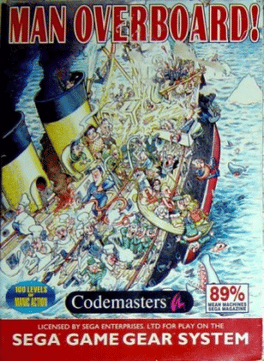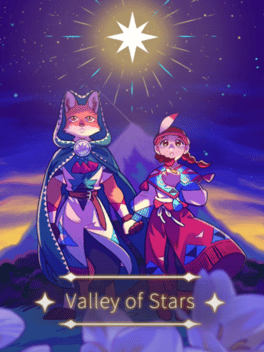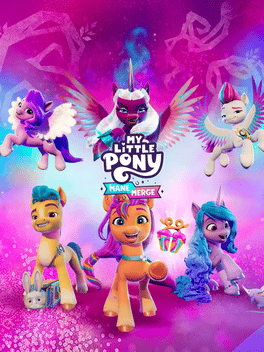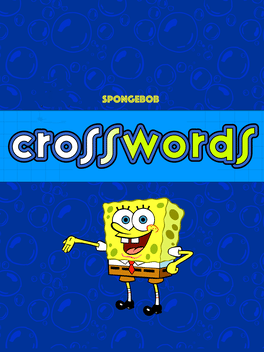Most Popular Puzzle Games - Page 169
-
Rat vs. Cat
Mr. Joey Mouse has a very sweet and little dream of filling his hole with all the cheese of this world. -
Monster Busters: Hexa Blast
Do you think you have what it takes to match the same colored monsters, and save the gingerbread cookie friends? Monster Busters: Hexa Blast is a brilliant match three puzzle game – a brand new yet classic match 3 style game with a hexagonal twist. If you love fun casual games and match three games, you are bound to love Hexa Blast. -
Rainbow Splash
Discover what’s at the end of the rainbow in the new addictive puzzle game, Rainbow Splash! Seemingly simple in concept, this game will test your puzzle solving skills. As you progress through the game, you’ll reveal new acts each with a new twist. Finally when you’re ready, try the challenge mode to truly put your skills to the test. -
Swipe: Maze solver
A new type of one hand playable maze game! Touching colors and piano musics will get your eyes and ears. -
Golly! Ghosts! Goal!
1996
-
Wankuru
2004
-
Flappy 95
1996
-
Hello Princess
A maze game set within a castle. You have to solve the maze, reach the princess and save her. -
Mimpi Hidden Objects
Meet Mimpi, the cutest puppy ever! Help him find hidden objects in a colorful world - in the craziest dream a dog can ever have! Travel through seven diverse lands that Mimpi visited on his original quest to find his master. -
The Light Box
This challenging and unique puzzle game is easy to pick up but has hours of gameplay. -
4 In a Blow
2019
4 In a Blow
2019
4 In a Blow is the classic 4 in a row made for casual and puzzle gamers. Unlock items that can help you make 4 in a row. Use dynamite, buy extra bombs, use the torch and air canister. Do everything to make 4 in a row. -
Oran's Table
Oran challenges you to take a seat at his table in this thoughtful puzzler. Use the unique movements of each piece to cover every portal. You'll need to step, slide, jump, swap, shift, mimic and connect your way to the solution. You must think creatively: pieces working in harmony create paths greater than the sum of their parts. Controls are simple. Tap to reveal range, and tap again to move. Features over 120 handmade puzzles, 6 unique pieces, and a few surprises which only the most devoted players will discover. Play the 1st 16 puzzles free, and pay only once to play the rest. -
Man Overboard!
1994
Man Overboard!
1994
In 60 levels you have to rescue as many passengers (dubbed the Dim Passengers) as possible. At the beginning the passengers fall through a tube in the level. Similar to Lemmings you have to find a way for the passengers to the exit of the level. In order to do so, you must blast hindrances such as cargo boxes and bulkheads with bombs or, when no bombs are left, reposition the boxes with a crane. There are also conveyor belts in the levels. If the belt moves in the wrong way, the passengers either can't use it or may even be transported to their dooms, being dropped off into water, fire or steam jets. You can usually choose the direction of the belts by pulling a lever. -
Valley of Stars
2022
Valley of Stars
2022
Nonogram puzzles with a mysterious story! Will the girl and Mr Fox be able to get to the Valley of Stars safely? What will await them at the end of the journey? Watch their beautiful journey to the end while enjoying the nonogram puzzles. -
Balance Weight
Arrange your cats and other items to 2 sides of the scale to balance. Sound easy right? But it will blow you mind when you actually solve it. -
Into the Winds: Zen Flowers
Into the Winds: Zen Flowers aims to provide a meditative gameplay experience. Take your time to match flowers and watch as the flowers disperses their petals, carried away by the gentle breeze. A down to earth Match-2 puzzle game infused with elements of Zen. -
My Little Pony: Mane Merge
2022
C’mon everypony, we must save Equestria! A darkness is creeping through the lands, causing chaos to the Earth Ponies of Maretime Bay, through to the Unicorns in Bridlewood, and even to the Pegasi soaring above the clouds in Zephyr Heights. Saddle up and help the Mane 5, Sunny, Izzy, Zipp, Pipp, & Hitch, as they work together to investigate what or who is behind this dark curse.

